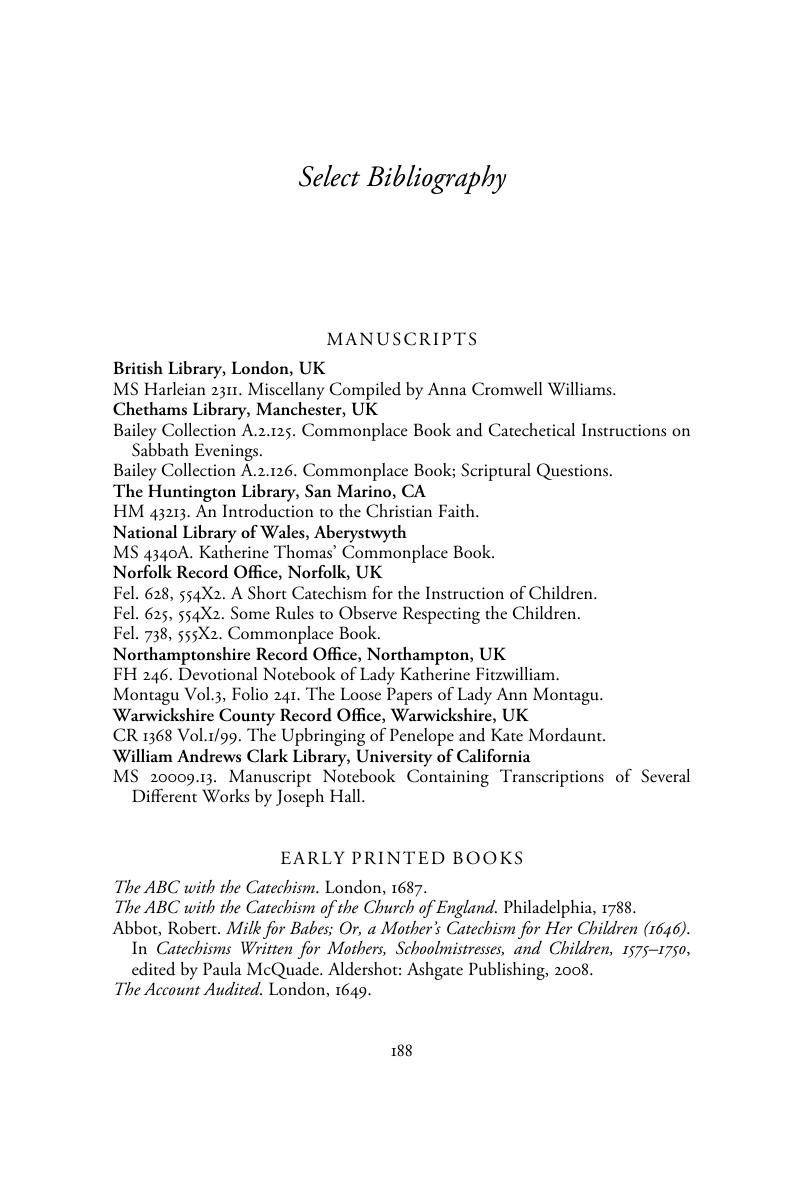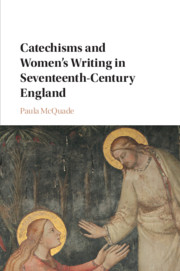Book contents
- Catechisms and Women’s Writing in Seventeenth-Century England
- Catechisms and Women’s Writing in Seventeenth-Century England
- Copyright page
- Dedication
- Contents
- Acknowledgments
- Notes on Transcription and Citation
- Introduction “Milk for Babes”: Catechisms and Female Authorship in Early Modern England
- Part I Domestic Catechesis and Female Authorship
- Part II Female Witness and Inter-Confessional Dialogue
- Part III Print and Polemic
- Epilogue
- Select Bibliography
- Index
- References
Select Bibliography
Published online by Cambridge University Press: 05 July 2017
- Catechisms and Women’s Writing in Seventeenth-Century England
- Catechisms and Women’s Writing in Seventeenth-Century England
- Copyright page
- Dedication
- Contents
- Acknowledgments
- Notes on Transcription and Citation
- Introduction “Milk for Babes”: Catechisms and Female Authorship in Early Modern England
- Part I Domestic Catechesis and Female Authorship
- Part II Female Witness and Inter-Confessional Dialogue
- Part III Print and Polemic
- Epilogue
- Select Bibliography
- Index
- References
Summary

- Type
- Chapter
- Information
- Catechisms and Women's Writing in Seventeenth-Century England , pp. 188 - 203Publisher: Cambridge University PressPrint publication year: 2017



